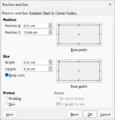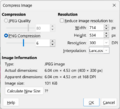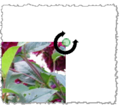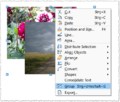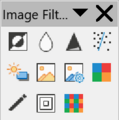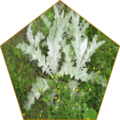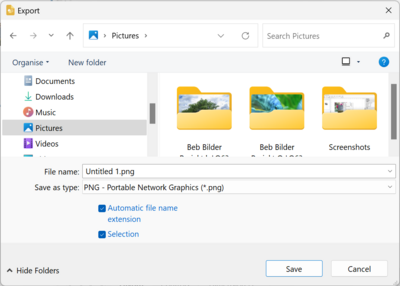Videos/InsertingImagesInDraw
TDF LibreOffice Document Liberation Project Community Blogs Weblate Nextcloud Redmine Ask LibreOffice Donate
This page is in work!
Foreword
This video shows how to "Inserting Images in Draw - LibreOffice" and links to this page here, which provides further information and details.
Note that the drawing functions in Draw and Impress are identical and can be used in the same way.
The basis of this description is the Online-Help.
Link to the Video
Link to the Video (in German [DE]):
Bilder einfügen in Draw - LibreOffice
Insert an Image
Open Draw.
Select the ▸ menu.
In the "Insert Image" dialog select the image file "Bild_015k.JPG".
In the dialog you also have the option of inserting the Image as a link by ticking "Link".
Linked Images require considerably less storage space in a document than directly inserted Images.
Now click on .
The Image is now displayed in the document.
Please note that the Image loses its file name when it is inserted.
Position and Size
With the menu item you can determine the position of the Image within the page and adjust the size of the Image.
Right-click on the Image and select from the Context menu. ( F4 ).
You can determine the "Height" and "Width" of the Image in the "Position and Size" dialog.
To keep the proportions, place a tick at ![]() .
.
For "Width" enter 5.00 cm, click on the value for "Height" so that it adjusts automatically.
Click on and the Image is immediately adjusted in the dimensions.
The value for the ″Height″ no longer needs to be entered, as you have ticked the box for ″Keep ratio″.
Left-click and hold the Image and drag it to the desired position or select the context menu again to enter the "Position" for X and Y position as a value at .
Style when inserting
By default, the Style / Drawing Style "Object without fill and no line" is assigned to an Image when it is inserted.
If you want to give the inserted Image an embellishment such as a Border ( Line ), you should create a user Style and assign it to the Image.
Create user Style
Right-click on the drawing Style "Default Drawing Style" and select .
In the "Organiser" tab, enter an incoming name, for example "Object with Line".
Click on the tab "Line" and enter your specifications for the Style, the Colour and the Width of the Line.
Click on .
Assign User Style
Select the Image that you want to assign to the new User Style.
Double-click on the User Style and the Image will adopt the settings for the Line.
The Image now has a Border (Line).
Adapt Drawing Styles
You can adapt or edit the User Style or existing Drawing Style for your purposes.
Right-click on the Image and select from the Context menu. ( Alt + P ).
The "Graphic Styles:..." dialog appears with the Drawing Style currently assigned to the Image.
Compress
Compressing an Image serves to reduce the file size.
A file size of approx. 100 kB is normally quite sufficient.
Since you have already chosen the smaller version of the Image Bild_015_k when inserting it, no additional compression is necessary.
Have a look at it anyway.
Right-click on the Image and select the menu .
In the appearing "Compress Image" dialog, the values for Width, Height and Resolution are displayed.
In the dialog below the centre, the Size of the Image file is displayed in "kB".
Click .
Remember to save your document.
See also: "Compress Image", in the online help pages.
Rotate or mirror the Image
With the Image selected, right-click on the Image and select from the Context menu.
Or select the icon "Rotate" in the "Image" toolbar.
The four corners and the side lines of the Image now each have an green dot.
If you move the cursor to one of these points, the Cursor shape changes to a three-quarter circle line with end arrows.
Click and hold the point and drag it clockwise or counterclockwise.
When the desired angle for the Image is reached, release the mouse button.
Another way to rotate the Image is in the Sidebar at Properties.
With the image selected, you can specify the angle in degrees in the sidebar in the lower area at ▸ .
Alternatively there via the rotary wheel, grab the blue dot and hold it, and rotate clockwise or counterclockwise.
When the desired angle for the Image is reached, release the mouse button.
At 0 degrees the Image is back in the position as it was inserted.
Crop an Image
If you want to crop an Image, right-click in the Image and select Crop.
The handle points are now blue.
You can now click and hold the points with the left mouse button and drag them into the Image.
If the section is as desired, then simply click somewhere next to the Image or press the ESC - key so that the Image is deselected.
The cropped Image does not need to be saved.
Only the cropped Image is visible, but the entire Image remains in the document.
In this way, the Cropping function can also be used to undo the Cropping.
Or you can select the Image marked as "Crop" and then select the ▸ menu.
Replace
You can Replace a selected Image.
Choose from the Context menu.
Original Size
Resets the Image back to the original Size when inserting it.
Image Quality settings - Export PDF
When you export the document as PDF, pay attention to the Image Quality settings.
The setting for PDFs in the menu ▸ ▸ , in the tab "General", there at "Images".
Further Image editing options
In the Context menu select further Image editing options.
If you right-click on an Image in the document, you have even more options for Image editing via the Edit with External Tool for the Image.
Edit with External Tool
Right-click the Image and select .
An Image editing program opens that has been set for this purpose in the operating system with the file type of the Image.
If you don't have a suitable Image editing program, you can download a program from the Internet.
Here are a few examples of Image editing programs
Paint.NET, IrfanView, Gimp, (descriptions can be found in Wikipedia).
This way you can edit the image with an Image editor (tool) for your purposes.
Group images
Select the images you want to group.
Then select from the Context menu if you have more than one image selected.
You can group images in Draw and copy or export the result and select the image format beforehand.
Filter and Colour
In the toolbar "Image" and in the ▸ menu you have further editing options.
Filter
With Filter you can:
- Invert
- Smooth
- Sharpen
- Remove Noise
- Solarisation
- Ageing
- Posterise
- Pop Art
- Charcoal Sketch
- Relief
- Mosaic
Colour
With Colour you can make the following changes:
- RGB values
- Brightness
- Contrast
- Gamma
Images and photos in Shapes
To insert images and photos into Shapes in LibreOffice Draw, right-click on a Shape, select ▸ in the context menu.
Click on and buttons and use the settings in the »Options« area to customize the appearance.
Export
In Draw you can export selected images and shapes (objects).
Select the objects you want to export individually or together.
Choose ▸ from the menu.
In the "Export" dialog, place a check mark next to "Selection".
For File type, select the desired file type.
Specify a file name and the save destination.
Further Informations
Documentation / Manuals
Here you will find the Documentation / Manuals:
Any questions?
For questions on this topic go to:
Get Involved
Join us today and help us to make it even better!
Donate
LibreOffice is Free Software and is made available free of charge.
Your donation, which is purely optional, supports our worldwide community.
If you like the software, please consider a Donation.





